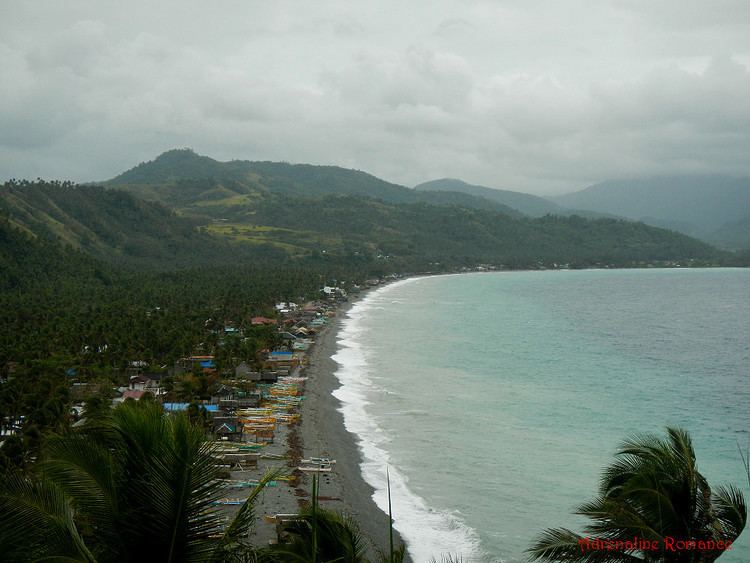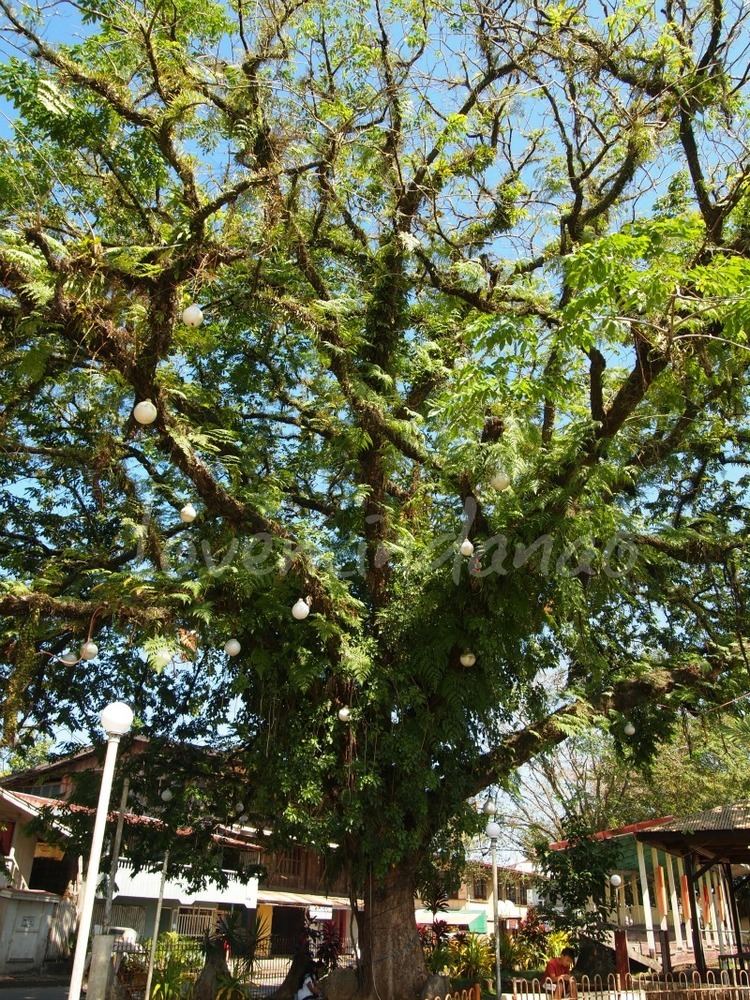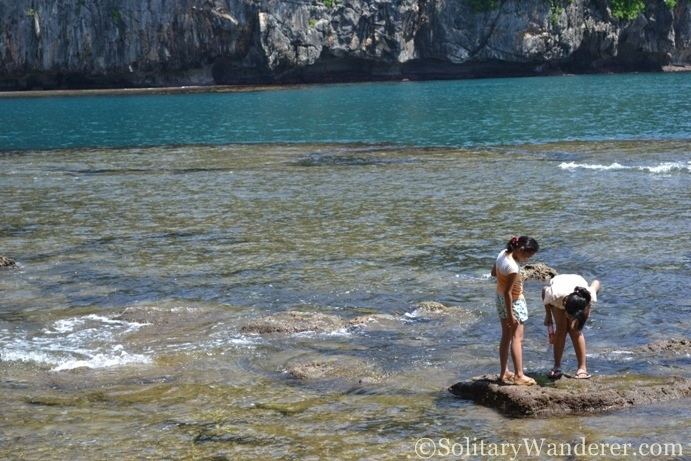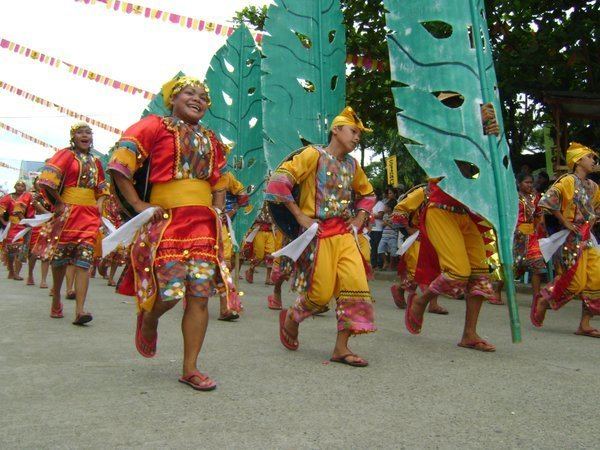Country Area 291.73 km2 Mayor Roxanne C. Pimentel | Region | |
 | ||
Map of Tandag
Tandag, officially the City of Tandag and often referred to as Tandag City, is a fifth income class city and the provincial capital of the province of Surigao del Sur, Philippines, on the island of Mindanao. According to the 2015 census, it has a population of 56,364 people.
Contents
- Map of Tandag
- Tandag surigao del sur meron ding hundred islands na pwedeng pasyalan
- Etymology
- History
- Cityhood
- Geography
- Demographics
- Barangays
- Languages
- Climate
- Culture and festivals
- Places of interest
- City proper
- By air
- By land
- By sea
- Hospitals
- Basic Education
- Baccalaureate
- Sister cities
- References

The city celebrates the "Diwatahan Festival" on the third week of January in honor of Señor Sto. Niño. It also celebrates "Araw ng Tandag" every September 10 showcasing the city's blissful achievements through the years.

Farming and fishing are the main economic activity for most of the people in Tandag. Chief farm products are rice, corn, and coconut. Livestock and poultry raising are also important sources of income. Tandag has a national secondary airport and a seaport.

Tandag surigao del sur meron ding hundred islands na pwedeng pasyalan
Etymology

Many versions have been given regarding the name of Tandag. One such version said that Father Calan, Father Encarnacion and another priest were on their way to visit chieftain Suba to baptize his people. When one of the missionaries asked a native rowing their boat what name of the place was with fingers pointing downward, the native who naught the priest meant the school of fish, answered "tamda", meaning look down. This name later became Tandag. Father Encarnacion, the member of the group was later killed by the natives.

The other version says that when De la Vega landed in Tandag to subdue the ferocious Caragas as the rebellios natives were called then, he did not know the name of the place so he inquired from the native who was gathering the leaves of herbs locally known as tangad. The native who did not understand Spanish answered hesitantly "tangad". Later, the name was changed to Tandag.
Another story tells a group of Spanish soldiers and missionaries who lost their way. When they asked for correct direction, the natives who could not understand a word they said only laughed at them all while saying the word "tank", meaning lost. Thus the name Tandag aptly means lost.
History
Cityhood
During the 11th Congress (1998–2001), Congress enacted into law 33 bills converting 33 municipalities into cities. However, Congress did not act on a further 24 bills converting 24 other municipalities into cities.
During the 12th Congress (2001–2004), Congress enacted into law Republic Act No. 9009 (RA 9009), which took effect on 30 June 2001. RA 9009 amended Section 450 of the Local Government Code by increasing the annual income requirement for conversion of a municipality into a city from ₱20 million to ₱100 million. The rationale for the amendment was to restrain, in the words of Senator Aquilino Pimentel, "the mad rush" of municipalities to convert into cities solely to secure a larger share in the Internal Revenue Allotment despite the fact that they are incapable of fiscal independence.
After RA 9009 went into effect, the House of Representatives of the 12th Congress adopted Joint Resolution No. 29, which sought to exempt from the ₱100 million income requirement in RA 9009 the 24 municipalities whose cityhood bills were not approved in the 11th Congress. However, the 12th Congress ended without the Senate having approved Joint Resolution No. 29.
During the 13th Congress (2004–2007), the House of Representatives re-adopted former Joint Resolution No. 29 as Joint Resolution No. 1 and forwarded it to the Senate for approval. However, the Senate again failed to approve the Joint Resolution. Following the suggestion of Senator Aquilino Pimentel (Senate President), 16 municipalities filed, through their respective sponsors, individual cityhood bills. The 16 cityhood bills each contained a common provision exempting it from the ₱100 million income requirement of RA 9009 –
"Exemption from Republic Act No. 9009. — The City of x x x shall be exempted from the income requirement prescribed under Republic Act No. 9009."
On 22 December 2006, the House of Representatives approved the cityhood bills. The Senate also approved the cityhood bills in February 2007, except that of Naga, Cebu which was passed on 7 June 2007. These cityhood bills lapsed into law on various dates from March to July 2007 after President Gloria Macapagal-Arroyo failed to sign them.
The point of law at issue in 2007 was whether there had been a breach of Section 10, Article X of the 1987 Constitution, which provides –
No province, city, municipality, or barangay shall be created, divided, merged, abolished or its boundary substantially altered, except in accordance with the criteria established in the local government code and subject to approval by a majority of the votes cast in a plebiscite in the political units directly affected.
– and in each case the established criteria were far from met.
In November 2008, Tandag and 15 other cities lost their cityhood after the Supreme Court of the Philippines granted a petition filed by the League of Cities of the Philippines, and declared unconstitutional the cityhood law (RA 9392) which had allowed the town to acquire its city status. The Supreme Court ruled that they did not pass the requirements for cityhood.
On 10 December 2008, the 16 cities affected acting together filed a motion for reconsideration with the Supreme Court. More than a year later, on 22 December 2009, acting on said appeal, the Court reversed its earlier ruling as it ruled that "at the end of the day, the passage of the amendatory law" (regarding the criteria for cityhood as set by Congress) "is no different from the enactment of a law, i.e., the cityhood laws specifically exempting a particular political subdivision from the criteria earlier mentioned. Congress, in enacting the exempting law/s, effectively decreased the already codified indicators." Accordingly cityhood status was restored.
But on 27 August 2010, the 16 cities lost their city status again, after the Supreme Court voted 7-6, with two justices not taking part, to reinstate the 2008 decision declaring as "unconstitutional" the Republic Acts that converted the 16 municipalities into cities. A previous law required towns aspiring to become cities to earn at least ₱100 million annually, which none of the 16 did.
On 15 February 2011, the Supreme Court made another volte-face and upheld for the third time the cityhood of 16 towns in the Philippines.
Finally, on 12 April 2011, the Supreme Court, in an en banc ruling delivered in Baguio City, affirmed the finality of the constitutionality of the 16 cityhood laws by resolving that:
We should not ever lose sight of the fact that the 16 cities covered by the Cityhood Laws not only had conversion bills pending during the 11th Congress, but have also complied with the requirements of the LGC prescribed prior to its amendment by R.A. No. 9009. Congress undeniably gave these cities all the considerations that justice and fair play demanded. Hence, this Court should do no less by stamping its imprimatur to the clear and unmistakable legislative intent and by duly recognizing the certain collective wisdom of Congress. WHEREFORE, the Ad Cautelam Motion for Reconsideration (of the Decision dated 15 February 2011) is denied with finality.
On 28 June 2011 the Supreme Court directed the Clerk of Court to issue the entry of judgment on the cityhood case of 16 municipalities.
Geography
Tandag City is located along the northeastern coast of Mindanao Island facing the Philippine Sea. It is bounded on the north by the municipalities of Cortes and Lanuza, on the east by the Philippine Sea, on the south by the towns of Tago and San Miguel, and on the west by the province of Agusan del Sur. It is located 448 nautical miles from Manila and 150 nautical miles from Cebu. The distance from Surigao City in the north to Tandag is about 200 kilometres (120 mi) and 331 kilometres (206 mi) is the distance from Davao City to the south.
Demographics
It consists of twenty-one (21) barangays. Six of which are urban barangays, five are coastal barangays, four are built-up expansion and six are hinterland barangays. The urban barangays comprise 1,594.10 hectares; 3,464.61 hectares for coastal barangays; 2,233.15 hectares for built-up expansion barangays and 4,964.34 hectares for hinterland barangays.
Barangays
Tandag is politically subdivided into 21 barangays. Majority of the barangays are considered rural areas.
Languages
Major languages spoken are Tandaganon (a language closely related to Surigaonon) and Cebuano (Mindanao variant). Filipino and English are widely used in schools, businesses and government offices.
Climate
The municipality falls under the Type II of climate in the country, which is characterized by rainfall distributed throughout the year, with a negligible short dry season.
Wet season is highly pronounced from September to February with an annual average rainfall of 458.94 millimetres (18.069 in) and an average temperature of 26.3 °C (79.3 °F). Dry months are from March to August.
